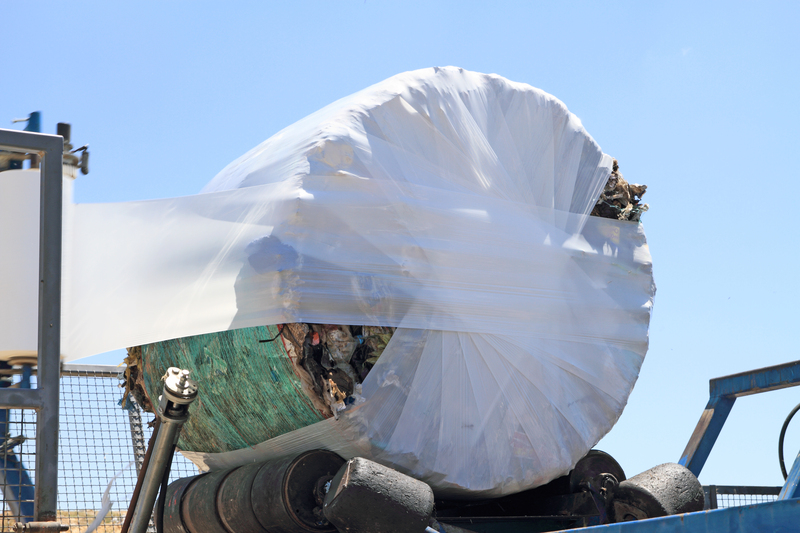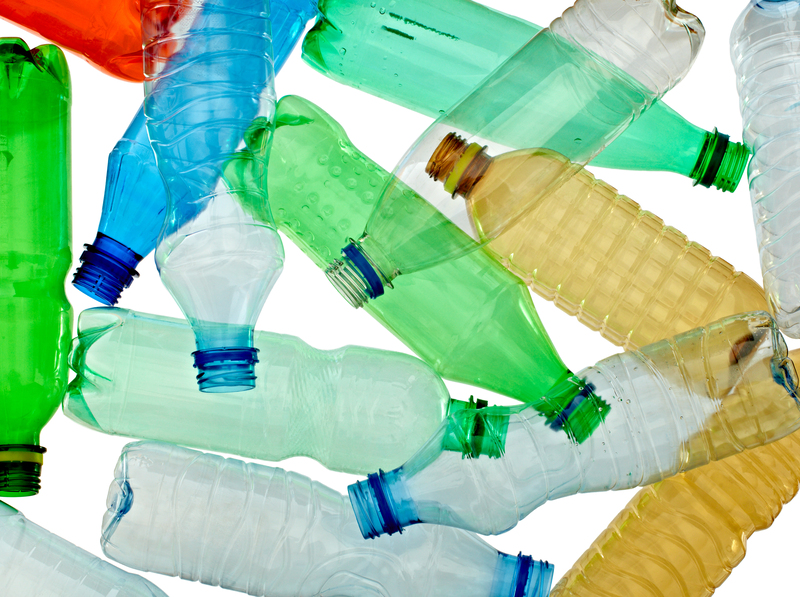Understanding Best Practices for PPE Waste Disposal
The global reliance on Personal Protective Equipment (PPE) has dramatically increased since the onset of health crises like the COVID-19 pandemic. As a result, proper PPE waste disposal has become a critical concern for environmental sustainability, public safety, and regulatory compliance. This comprehensive guide explores the best practices for PPE waste disposal, offering insights for individuals, healthcare professionals, organizations, and municipalities seeking to enhance their PPE waste management strategies.

What is PPE Waste?
Personal Protective Equipment (PPE) includes a wide range of items such as face masks, gloves, gowns, face shields, and shoe covers. These materials are designed to protect users from infectious agents, chemicals, or physical hazards. However, after use, they may carry biological contaminants, hazardous chemicals, or physical impurities, thus classifying them as potentially hazardous waste.
- Medical PPE Waste: Generated from hospitals, clinics, laboratories, and other healthcare settings.
- Industrial PPE Waste: Produced by factories, construction sites, and other non-medical workplaces.
- Household PPE Waste: Originating from daily personal use, particularly during pandemics.
Understanding the definition and risks of PPE waste is the first step toward implementing proper PPE disposal methods.
Why is Proper PPE Waste Disposal Important?
Improper PPE waste disposal poses significant threats, including:
- Environmental Contamination: Many PPE materials, such as disposable masks and gloves, are made from non-biodegradable plastics that persist in the environment for decades.
- Spread of Disease: Used PPE, especially from healthcare settings, may harbor infectious agents and contribute to the spread of diseases if not handled correctly.
- Harm to Waste Workers: Waste management employees are at risk of exposure to hazardous agents through improper PPE waste handling.
- Regulatory Violations: Mishandling PPE waste can result in hefty fines and penalties from local, national, or international regulatory bodies.
Therefore, instituting robust best practices for PPE waste disposal safeguards public health and promotes environmental sustainability.
Common Types of PPE Waste
- Masks: Surgical masks, N95, cloth masks
- Gloves: Nitrile, latex, vinyl
- Gowns and Aprons
- Face Shields and Goggles
- Shoe and Head Covers
- Sanitizing Wipes
Each category of PPE waste must be assessed for contamination level and disposed of according to specific protocols to minimize risk.
Regulations Governing PPE Waste Disposal
It is vital to understand the legal landscape concerning PPE waste management and disposal. Key regulations include:
- World Health Organization (WHO) Guidelines: Provide global recommendations for safe PPE disposal in healthcare and community settings.
- Centers for Disease Control and Prevention (CDC): Issue protocols for handling infectious PPE waste in the United States.
- Occupational Safety and Health Administration (OSHA): Mandate workplace safety standards for hazardous waste, including PPE.
- Environmental Protection Agency (EPA): Regulates the disposal of PPE classified as hazardous or medical waste.
- Local and State Regulations: Vary widely; always check local guidelines to ensure compliance.
Staying informed and compliant with these regulations is essential for any organization or individual dealing with PPE waste disposal.
Best Practices for PPE Waste Disposal
1. Segregation at Source
One of the cornerstones of safe PPE disposal is segregation at the point of generation. This involves:
- Designating Separate Bins: Places to deposit used PPE, clearly marked and color-coded to distinguish from regular waste.
- Use of Leak-proof, Lidded Containers: Prevents accidental contact and environmental contamination.
- Educating Staff and Users: Provide clear instructions about which items go where, emphasizing the importance of correct disposal.
2. Handling and Transporting PPE Waste
Proper handling and transportation procedures reduce exposure risks:
- Ensure all waste handlers wear appropriate PPE while collecting and moving waste.
- Bags should be sealed tightly and securely to avoid spillage or exposure.
- PPE waste should be moved regularly to avoid overflow and unsanitary conditions.
- Vehicles and trolleys used for waste transport should be regularly disinfected.
3. Storage of PPE Waste
Storage guidelines are critical to prevent secondary contamination:
- Store PPE waste in a designated, secure location, away from public access and food areas.
- Ensure the area is well-ventilated and regularly sanitized.
- Limit storage duration to the statutory guidelines, typically less than 48 hours in most jurisdictions.
4. Treatment and Final Disposal
Depending on the nature of contamination, several treatment and disposal options exist:
- Incineration: Most effective for infectious or heavily contaminated PPE. High temperatures destroy pathogens and reduce waste volume.
- Autoclaving: Uses pressurized steam to sterilize PPE waste before landfill disposal.
- Chemical Disinfection: Suitable for certain reusable PPE or lightly contaminated materials.
- Engineered Landfills: Used for non-infectious PPE waste after appropriate pre-treatment.
Never dispose of contaminated PPE in regular household or recyclable waste streams as this poses significant health and environmental hazards.
PPE Waste Disposal for Different Settings
Healthcare Settings
Hospitals and clinics generate large volumes of infectious PPE waste. The following steps are recommended:
- Place dedicated PPE disposal bins in patient care areas, entry and exit points.
- Train staff on donning, doffing, and discarding used PPE safely.
- Adhere strictly to local infection control protocols for segregation and transfer of infectious waste.
- Partner with licensed biomedical waste treatment companies for compliant disposal.
Industrial and Commercial Environments
Factories, warehouses, and offices also consume PPE, especially during public health emergencies. Best practices include:
- Installing conspicuous and lined PPE disposal stations at key locations.
- Providing instructions and signage to inform employees on proper PPE disposal procedures.
- Coordinating with certified waste handlers for periodic collection and safe disposal.
- Monitoring compliance through regular audits and feedback mechanisms.
Residential Settings
Households are increasingly using masks and gloves in daily life. To ensure safety:
- Double-bag used PPE items before disposing of them with household waste, if local regulations permit.
- Wash hands thoroughly after handling used PPE and before touching other items.
- Check local guidelines for special PPE waste collection programs, especially during outbreaks.
- Never flush PPE items down the toilet as it creates plumbing and environmental issues.
Reducing PPE Waste: Sustainable Alternatives
While PPE waste disposal best practices remain crucial, reducing the generation of PPE waste is even more sustainable. Consider these options:
- Reusable PPE: Where safe and feasible, use PPE designed for multiple uses, following strict decontamination protocols.
- Biodegradable Alternatives: Opt for PPE made from compostable or biodegradable materials.
- Minimized Usage: Use PPE rationally and only when necessary--avoid unnecessary overuse to limit waste production.
- Recycling Initiatives: Participate in emerging programs where certain PPE items are collected and processed for recycling.
Innovation in PPE design and waste management technology is paving the way for safer, greener practices.
Common Mistakes in PPE Waste Disposal
- Mixing PPE with General or Recyclable Waste: Increases infection risks and contaminates recyclable materials.
- Improper Bagging: Leaving used PPE loose in bins exposes others to contamination.
- Neglecting Training: Unaware staff are more likely to mishandle PPE waste.
- Ignoring Local Guidelines: Non-compliance can result in community spread and legal trouble.
Avoiding these pitfalls is essential for safe and responsible PPE waste management.

The Future of PPE Waste Disposal
The surge in PPE waste globally has prompted innovations in both materials and processes:
- Advanced Sterilization and Recycling Techniques: Emerging methods to safely recycle single-use PPE materials.
- Eco-friendly PPE Design: Research into materials that degrade rapidly or are easier to process post-use.
- Smart Waste Tracking: Digital solutions for tracing PPE waste from generation to final disposal ensure accountability and efficiency.
As the world adapts to changing health landscapes, continued investment in sustainable PPE disposal frameworks will be critical.
Conclusion: Key Takeaways for PPE Waste Disposal Best Practices
- Segregate, handle, transport, and store PPE waste safely at every stage of the disposal chain.
- Follow all relevant local, national, and international regulations for PPE waste disposal.
- Educate staff, users, and community members on the importance of proper PPE waste disposal to prevent accidents and disease spread.
- Embrace sustainable alternatives and innovations to minimize long-term environmental impact.
Understanding and implementing best practices for PPE waste disposal is a shared responsibility. Whether in a hospital, office, or at home, everyone has a role to play in safeguarding health and protecting the environment. Stay informed, be proactive, and always prioritize safe PPE waste management in your daily routines.
Frequently Asked Questions (FAQs) on PPE Waste Disposal
-
Can PPE waste be recycled?
Currently, most PPE waste cannot be recycled via standard municipal recycling streams due to contamination and material complexity. However, special programs and technological innovations are emerging to recycle specific types of PPE. -
How should households dispose of used masks and gloves?
Double-bag used masks and gloves, then dispose of them with other household waste if permitted by local guidelines. Always wash hands after touching used PPE. -
What should businesses do to ensure proper PPE disposal?
Provide dedicated PPE disposal bins, train staff, partner with certified waste handlers, and regularly audit compliance. -
Why is segregation of PPE waste important?
Segregation ensures that infectious and hazardous waste is isolated from general waste, reducing infection risks and facilitating safe treatment and disposal.
For further guidance, consult your local regulatory authority or a waste management professional specializing in PPE waste disposal.
